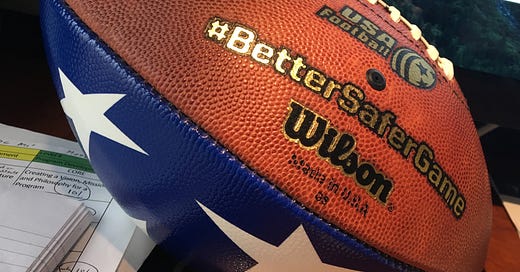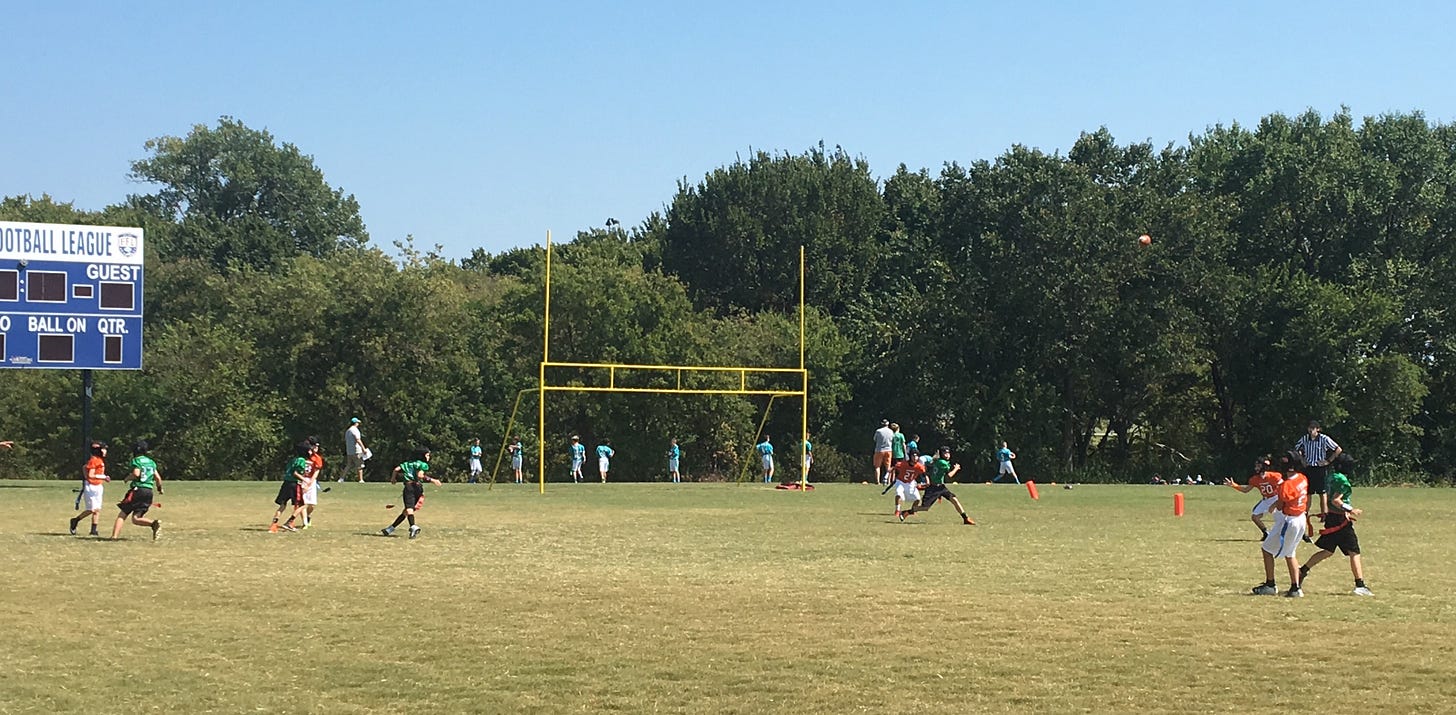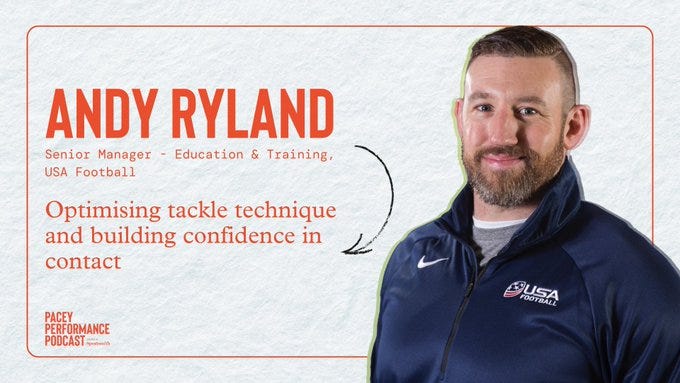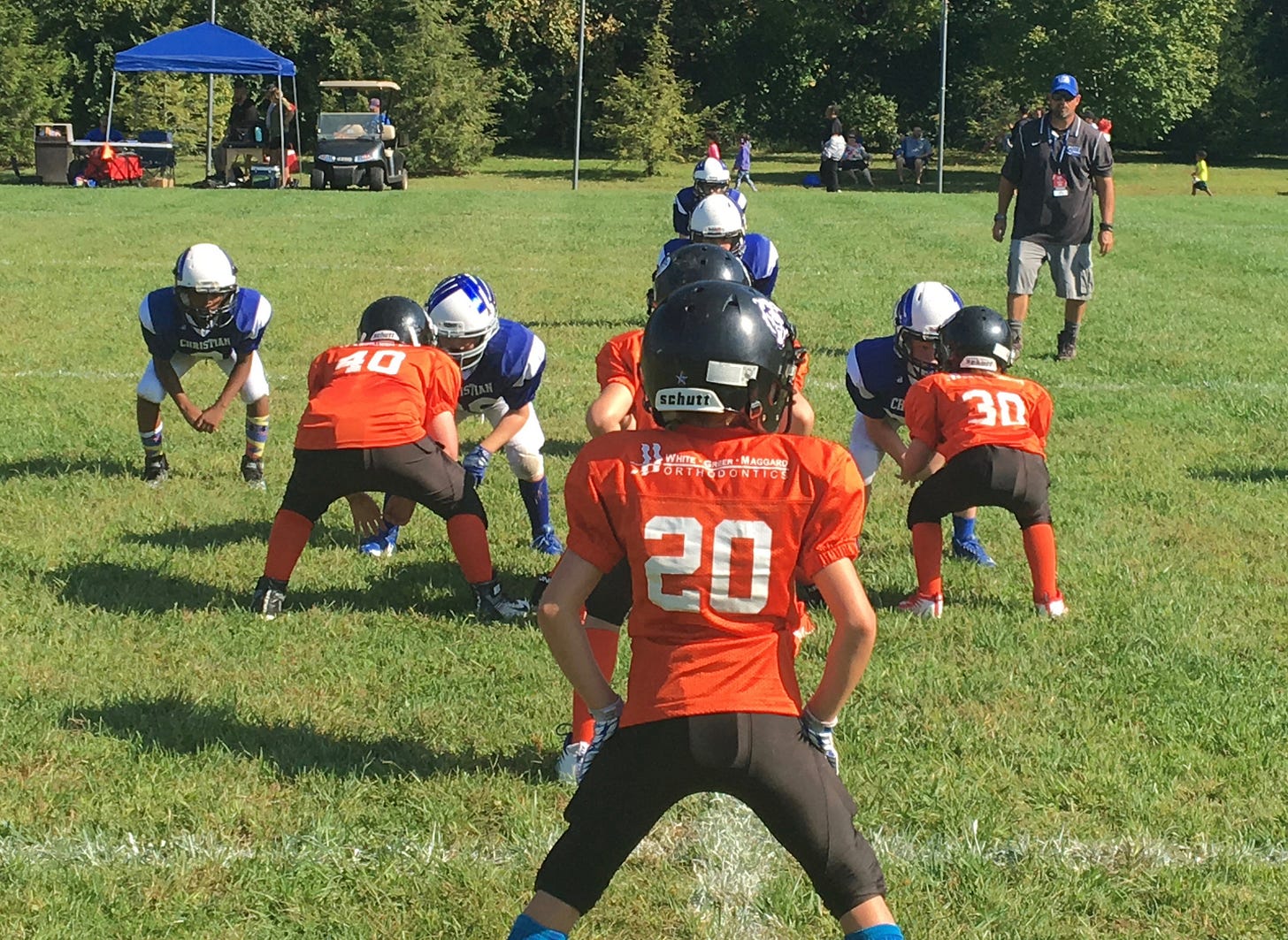From Flag to Friday Nite Lites to the Super Bowl
Musings and resources on the science of America's Game
Besides the kickoff to the season in early Fall, this time of year is second-to-none for American football. The NCAA National Championship. The NFL playoffs and the Super Bowl. Combine prep and off-season strength and conditioning to get bigger, faster, and stronger.
In this post, I’ll share some thoughts, experiences and resources on America’s game.
About 5 years ago, I was in the thick of American football as the Director of High Performance and Coach Education at USA Football, the national governing body of youth football. At the time, there were a few hot buttons - head injury and CTE and the trickle down of if and the question and debate of when tackle football should begin at the youth level. Both continue to be on the radar. Recently, the youth football tackle ban gained momentum in California before being blocked by the governor.
A full discussion of the for’s and against’s banning youth tackle football is beyond the scope of this blog, but I will share some insights into the role of flag football and modified games here.
Flag Football - a safer alternative and gateway to tackle football
Given the attention of the potential health and safety concerns for youth tackle football, alternative formats have been proposed. This was taking shape during my time at USA Football, and one such format - flag football - continues to increase in popularity and this has recently been helped when it was announced that flag football would become an Olympic sport for the 2028 games in Los Angeles.
Recently, I served on a PhD dissertation committee for Kim Barber-Foss, a certified athletic trainer and researcher at the Emory University Sports Performance and Research Center in Atlanta. The research was a descriptive epidemiology of injury in youth flag football - or how many injuries occur in flag football? The study was conducted during regional and national youth flag football tournaments and included a total of 1939 (1744 boys; 195 girls) athletes, ages 5 to 12 years. Here are a few key findings:
During game play, 47 injuries with an overall risk of injury of 2.4% (95%CI 1.8, 3.2) and an overall injury rate of 5.1 per 1000 athlete-exposures (95% CI 3.7, 6.8).
Although the results should be considered preliminary in girls because of the smaller sample, there was a higher risk in girls compared to boys.
The most common injury sites were Head/Face/Neck (n=15; 31.9%) followed by Ankle/Foot (n=9; 19.1%).
The most common types of injury were contusion (55.3%), sprain/subluxation (14.9%), and general trauma (10.6%); 74.5% of all injuries resulted from direct impact.
When compared to the publications of injury rate in youth tackle football, the rates for youth flag football was lower. However, injuries still occurred and the frequencies by body part, type and mechanism were similar. We recommended that adopting minimal protective equipment or padding may reduce the number of these reported injuries.
Furthermore, the emphasis on proper flag pulling technique should be taught as these initial steps are similar to tackling technique. If you want to learn more on introducing contact skills give this podcast with my former colleague Andy Ryland a listen - Optimising tackle technique and building confidence in contact.
Transitioning into Tackle Football: Modified Games and General Athletic Development
As an adult, imagine playing on a 300 yard long and 150 yard wide field?! Ya, that’s 3x the size of a normal football field.
Well, that’s how a normal field feels to an 8-10 year old - it’s a matter of scale.
Other sports have done a great job of scaling playing field dimensions, so why not football. And what about other modifications that make the learning of skills easier and progressive. Makes too much sense, right?!
During my time at USA Football, we worked with existing leagues who had been using modified rules and games and introduced “Rookie Football” as the bridge between flag and full-field tackle football. During the Fall 2017, we piloted this game type across the U.S. Unfortunately, the results were never published but in general, Rookie Football was well-received by those open-minded coaches and parents. And, the kids loved it!! They appreciated the smaller field, played multiple positions, there were more plays per game, they felt comfortable in a two-point stance at the line of scrimmage, enjoyed having coaches in the huddle and on the field to help teach and guide, etc.
Long-term Athletic Development: from Flag to Friday Nite and Beyond
During 2017, I was charged with putting together a LTAD model for youth football. Part of it included the game model but the other aspect was integrating general physical preparation into practice plans and also enhancing the middle school and high school strength and conditioning experience.
Along the way, I had the opportunity to meet and collaborate with a lot of great football strength & conditioning and performance minds. This culminated into a collaboration with the National Strength & Conditioning Association to produce a Special Issue of NSCA Coach, a journal aimed at the practitioner. The issue begins at the start of the journey towards the scholastic and professional levels with an overview of long-term athletic development as it applies to American football at the youth level. The next two articles deal with speed and energy system development. Following these articles, the tools for and importance of monitoring training loads is covered. This is followed by three sets of articles paired on a theme – one on the position-specific training of quarterbacks and linemen, the second on body composition and nutrition, and third set on injury prevention and return to play. The issue concludes with an article on enhancing movement skill and an account of preparing for the NFL Combine. As you can see below, the author list is a who’s who. Give a read during this off-season period, surely there are a few nuggets to be gained.










